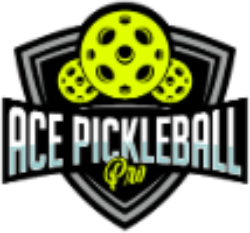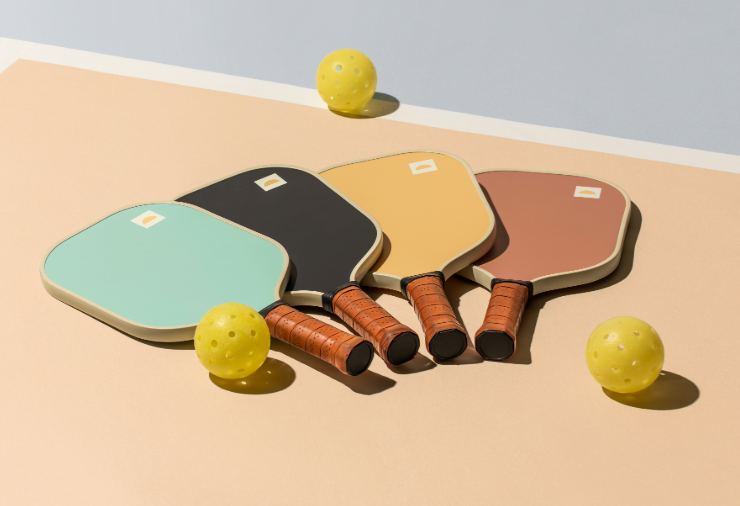A Data-Backed Guide to Choosing the Right Paddle Based on Skill, Tech, and Longevity
“The first time I picked up a paddle, I thought, ‘How different can they be?’ Two months later, my wrist was taped, my serves were flat, and I had paddle regret harder than post-leg-day stairs. Turns out, paddle tech isn’t just marketing fluff—it’s science, and it matters.”
Pickleball is booming—with over 36 million players in the U.S. alone, paddle choices now range from $30 to over $250. But is a premium paddle really a smart investment—or is it mostly hype?
In this in-depth guide, we break down not just what makes expensive paddles different, but who should buy them—and when. We’ll also explore future trends in paddle technology, hidden cost advantages, and introduce a unique “Player-Paddle Match Grid” to help you choose smarter, faster.
The Value Question: Performance or Prestige?
At first glance, a $200 paddle may look similar to a $60 one—but inside, they’re engineered very differently:
| Feature | Budget Paddle ($30–$60) | Mid-Tier ($60–$120) | Premium ($120–$250+) |
|---|---|---|---|
| Core | Wood or basic polymer | Polypropylene honeycomb | Carbon or thermoplastic foam |
| Surface Material | Basic composite | Fiberglass or graphite | Carbon fiber (e.g. T700 raw carbon) |
| Durability | ~6 months | 12–18 months | 2+ years |
| Weight Balance | Often uneven | Moderate | Precision-engineered |
| Shock Absorption | Minimal | Moderate | Advanced (e.g. thermoformed edge walls) |
| Spin/Control Enhancement | None | Some | High (e.g. textured surface tech) |
Research Note: Paddle engineers consistently report that raw carbon fiber surfaces generate more spin due to their gritty texture and higher friction coefficient. Look for materials like Toray T700 if spin, control, and durability matter to you.
Who Should Consider an Expensive Paddle?
Beginner: Start Simple
Ideal Paddle: ~$50 graphite or composite
Why: At this stage, you’re learning footwork, grip, and basic mechanics—advanced paddle features won’t matter yet.
Been there moment: “I blamed the ball for months before realizing it was my $40 paddle all along.”
✅ Check out: What is a good pickleball paddle for beginners?
Intermediate: Where Value Peaks
Ideal Paddle: $90–$150 fiberglass or carbon blend
Why: Control, forgiveness, and shock absorption start to matter. A good mid-tier paddle reduces mishits and fatigue.
Been there moment: “The day I stopped blaming my swing and started blaming my paddle was the day I upgraded—and improved.”
Learn more: Best pickleball paddles for intermediate players
Advanced/Competitive: Performance or Perish
Ideal Paddle: $150–$250+ carbon fiber with thermoforming
Why: At this level, paddle tech creates marginal gains that win matches—torque control, enhanced spin, and precision weight balance are everything.
Been there moment: “When I started losing to players with less skill—but better gear—I knew I had to level up.”
Explore: Best paddles for advanced players
Future Trends in Paddle Tech
| Innovation | Description | Why It Matters |
|---|---|---|
| Smart Paddles | Integrated sensors to track spin, swing speed, and sweet-spot accuracy (e.g., SIQ Smart Paddle) | Real-time feedback for player development |
| Sustainable Builds | Recyclable cores, bio-resins, and eco-friendly edge guards | Lower environmental impact; future-proof manufacturing |
| AI-Based Fit Matching | Apps and tools that suggest paddles based on biomechanics and swing arc | Shortens the learning curve; improves gear fit |
Insight: In the next few years, smart paddles could become standard in pickleball coaching and high-performance training—much like how smart racquets transformed tennis.
Real ROI: The Paddle Investment Calculator
Let’s say you play 3x per week:
| Paddle Type | Cost | Est. Lifespan | Cost per Play (Year 1) |
|---|---|---|---|
| Budget ($40) | $40 | 6 months | ~$1.50 |
| Mid-Tier ($100) | $100 | 12–18 months | ~$0.65 |
| Premium ($200) | $200 | 2+ years | ~$0.38 |
✅ Bottom line: The cost per play of premium paddles often ends up cheaper—especially if you play regularly.
The Player–Paddle Match Grid™
| Skill Level | Playing Style | Budget OK? | Mid-Tier Best? | Premium Worth It? |
|---|---|---|---|---|
| Beginner | Casual / Rec Play | ✅ Yes | ❌ No | ❌ No |
| Intermediate | Power Baseline | ❌ No | ✅ Yes | 🔄 Depends |
| Intermediate | Control / Dinking | ❌ No | ✅ Yes | ✅ Yes |
| Advanced | Tournament Play | ❌ No | ❌ No | ✅ Absolutely |
| Aging Players | Arm-sensitive play | ❌ No | ✅ Yes (light) | ✅ Yes (light + tech) |
Durability & Maintenance Tips
-
Storage: Keep your paddle in a case—avoid extreme heat or cold.
-
Cleaning: Use alcohol wipes or mild soap—never abrasive cleaners.
-
Grip Care: Re-grip every 3–4 months to avoid slippage and wrist strain.
Pro Tip: A worn-out grip is the silent saboteur of your soft game. Learn how to hold your paddle properly →
Final Verdict: Is It Worth It?
If you’re just starting out—no, you don’t need a $200 paddle. But if you’re playing often, chasing control, or competing, a high-performance paddle isn’t a luxury. It’s leverage.
Ask yourself:
- Are you missing shots you know you can make?
- Do your hands or wrists ache after longer sessions?
- Do you want more spin, stability, or consistency?
If yes—you’re ready to level up. Premium paddles aren’t just about tech. They’re about confidence.
Still unsure? Compare models like 13mm vs 16mm paddles or check out the best vibration-reducing options.
Start here:
👉 Beginner Paddle Buying Guide
👉 Best Intermediate Paddles
👉 Top Picks for Advanced Players
Which Pickleball Player Type Are You?
This isn’t a quiz. It’s a mirror—with a paddle-shaped filter.
No scores. No labels. Just three types of players.
One of them might be you.
One of them might be who you’re becoming.
The Dabbler
You play when it’s fun. You don’t overthink gear—until it lets you down.
The Seeker
You’re testing. Tuning. Watching others more closely.
You’re not obsessed—but you’re aware. You want better.
The Competitor
You know your paddle stats.
You analyze your own drop shots mid-match.
You don’t just play—you study the game.
So… which one are you now?
And which one are you becoming?

